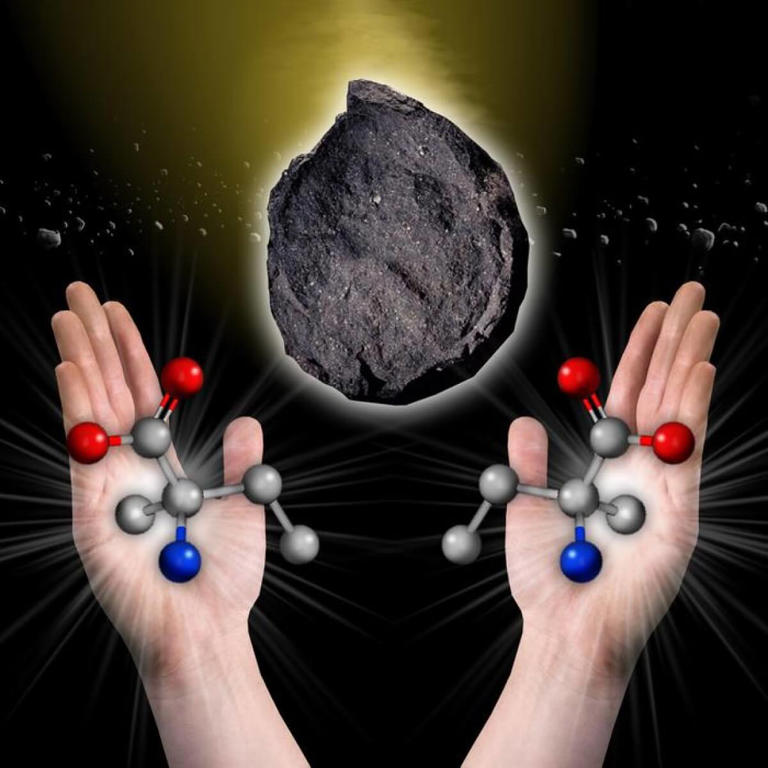Imagine a world where proteins could be built with mirror-image molecules, just like your left and right hands. Scientists have long wondered why life exclusively uses left-handed amino acids, and a groundbreaking NASA study has just made this puzzle even more intriguing.
In a surprising twist, researchers discovered that RNA — once thought to be the potential primordial architect of life — doesn’t inherently prefer left-handed amino acids. This latest finding challenges previous assumptions about how life might have emerged on our planet.
“The findings suggest that life’s eventual homochirality might not be a result of chemical determinism but could have emerged through later evolutionary pressures,” says Alberto Vázquez-Salazar, a postdoctoral scholar involved in the research, in a media release.
The study, published in Nature Communications, conducted a series of experiments simulating early Earth conditions. The team tested 15 different ribozyme combinations — molecular machines that can help build proteins — to see which amino acid orientations they might favor. Surprisingly, these RNA-like molecules showed no consistent preference for left or right-handed amino acids.
So, why does the “handedness” of life matter? Understanding how life’s building blocks might have formed could provide crucial insights into how life began on Earth — and potentially how it might exist elsewhere in the universe.
“Understanding the chemical properties of life helps us know what to look for in our search for life across the solar system,” explains NASA scientist Jason Dworkin.
Dworkin is the project scientist for NASA’s OSIRIS-REx mission, which collected samples from the asteroid Bennu and delivered them to Earth in 2023. These materials are believed to contain remnants from the solar system’s formation roughly 4.5 billion years ago.
“We are analyzing OSIRIS-REx samples for the chirality (handedness) of individual amino acids, and in the future, samples from Mars will also be tested in laboratories for evidence of life including ribozymes and proteins,” Dworkin notes.
The mystery continues, but each discovery brings us one step closer to understanding the fundamental origins of life itself.
Paper Summary
Methodology
The researchers tested how certain RNA molecules, called ribozymes, interact with amino acids that have different “handedness” (like left-handed and right-handed gloves). They designed experiments using a mix of these amino acids and let the ribozymes bind to them.
Afterward, they measured which type of amino acid each ribozyme preferred. To make it clear, ribozymes are like tiny tools that work with specific molecules, and the study was like giving these tools a choice between two shapes to see which they work better with.
Key Results
The study found that ribozymes don’t always pick the same “handedness” of amino acids. About half of them preferred right-handed ones, while the others liked the left-handed ones. This result was surprising because it shows that there isn’t a natural preference built into these RNA molecules. Instead, it depends on the specific design or family of the ribozyme. This suggests that life’s building blocks might not have started with a strong preference for one-handedness over the other.
Study Limitations
While the findings are insightful, they are based on a laboratory setup that might not fully represent conditions on early Earth. The ribozymes tested were also selected from an artificial pool, meaning they don’t necessarily reflect naturally occurring molecules. Additionally, the study focused on just one type of chemical reaction and amino acids, so the results might not apply to other situations or environments.
Discussion & Takeaways
This research challenges the idea that life’s molecules, like proteins, developed their handedness because of a natural bias in RNA. Instead, the handedness might have been influenced by random factors or chance events during early evolution. This insight opens up new possibilities for understanding the origins of life, suggesting that different paths could have been taken depending on which RNA structures were present at the start.
Funding & Disclosures
The study was funded by NASA, the Simons Foundation, and the National Science Foundation (NSF). Additional support came from the University of California’s fellowship programs. The authors declared no competing interests, ensuring that their results and interpretations are unbiased.












